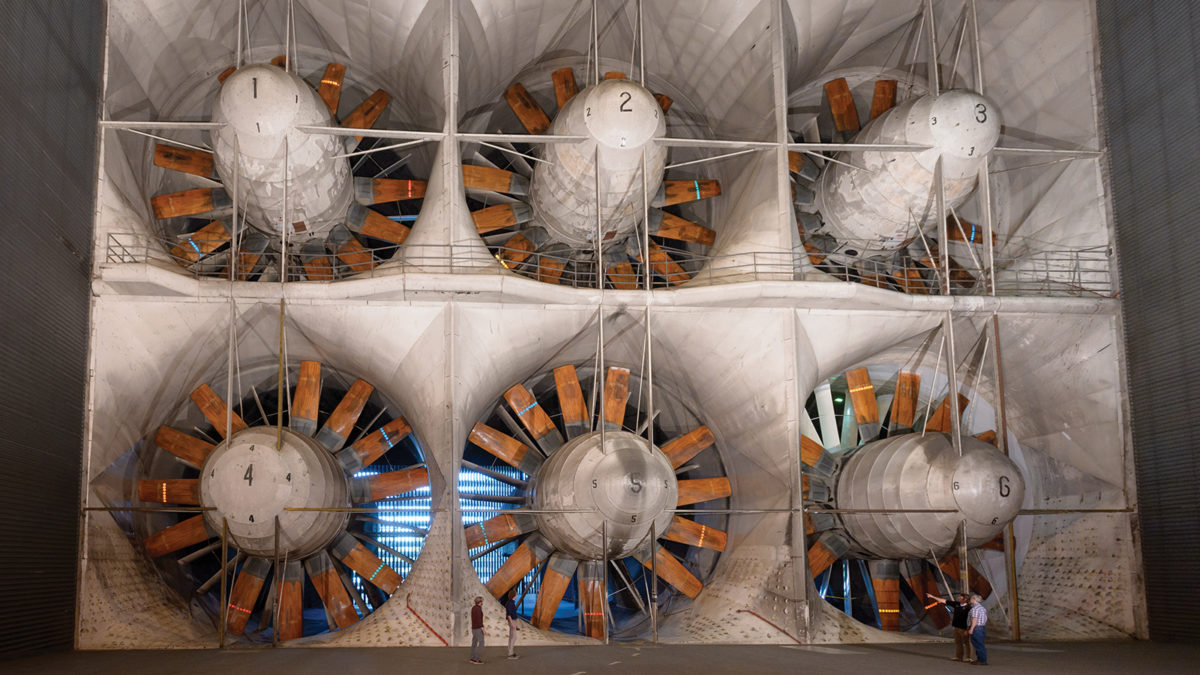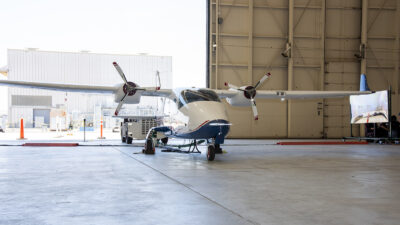Facility reactivation and upgrades highlight busy year for ground testing
By Pat Goulding II|December 2018
The Ground Testing Technical Committee focuses on evaluating aircraft, launch vehicles, spacecraft, structures and engines in wind tunnels and other facilities.
Ground test efforts in 2018 focused on the upgrade and reactivation of several critical test facilities, improvements to facility inspection approaches, and significant gains in test techniques and capabilities.
The National Full-Scale Aerodynamics Complex, part of the U.S. Air Force’s Arnold Engineering Development Complex, known as AEDC, returned to operation in June following a one-year recovery effort in the wake of a Class A mishap in June 2017. The mishap destroyed the fan blades on one of six drive motors that power the facility, requiring extensive repairs and a revised drive configuration. Following mishap investigations by NASA and the Air Force, the facility crew undertook an aggressive slate of repairs that included redistributing remaining healthy fan blades to reduce the total number of blades on each drive from 15 to 12. Subsequent checkout runs proved this new drive configuration causes minimal reduction in tunnel performance. The approach has allowed the complex to resume operations in support of customers in the 40-by-80-foot Wind Tunnel. Reactivation efforts continue for the 80-by-120-foot Wind Tunnel, and longer-term efforts are underway to replace and eventually upgrade all the blades in the fan drive.
Elsewhere at AEDC, the asset management team at the Aerodynamic and Propulsion Test Unit continued work on establishing a new inspection technique to detect flaws and cracks in the high-pressure vessels they use to run the von Kármán Gas Dynamics Facility. This effort began late in 2017. Previous inspections required significant downtime and manpower, as 90 pressure bottles had to be physically removed to allow extensive X-rays and other inspections to check for cracks. The new approach, which had been deployed previously at other facilities, involves using existing compressors to stress the bottles in situ to slightly above their normal capacity and installing specialized acoustic sensors to listen for any leaks or crack propagation. AEDC estimates the new approach will provide more than $300,000 in total savings and create much less downtime during the course of the current system recertification effort.
The facility team at NASA’s Glenn Research Center continued to work throughout the year on a major upgrade to the acoustic qualities of the 9-by-15-foot Low-Speed Wind Tunnel, or LSWT. The work began in June 2017, and the team expects to complete modifications and testing by the end of 2018, allowing calibration and customer testing to resume in 2019. NASA has operated the LSWT since 1969; it was equipped with an acoustic treatment in 1986. Following that upgrade, the tunnel began focusing primarily on performing aeroacoustic and aerodynamic performance testing for NASA and industry propulsion systems. Aircraft engines have been getting consistently quieter, and some engine model concepts operating at low power generate noise levels that are close to the background noise level of the current acoustic treatment in the LSWT. The planned acoustic upgrades are expected to lower background noise levels by 9.3 decibels (A-weighed), allowing testing at all takeoff and landing flight regime speeds.
Active testing also provided several advancements this year. NASA’s Langley Research Center conducted multiple tests throughout 2018 demonstrating new and innovative methods to improve data collection through pressure- and temperature-sensitive paint techniques while expanding the approaches to a broader array of test applications. Meanwhile, the team at AEDC’s National Full-Scale Aerodynamics Complex resumed checkout and qualification of NASA’s new Tiltrotor Test Rig in its 40-by-80-foot Wind Tunnel in June, following the facility’s yearlong reactivation.
Contributor: Dave Stark
Editor’s note: Pat Goulding II works for National Aerospace Solutions LLC as part of the National Full-Scale Aerodynamics Complex project team.
Photo: Workers inspect the new drive fan configuration at the National Full-Scale Aerodynamic Complex in Moffett Field, Calif. Credit: NASA



































